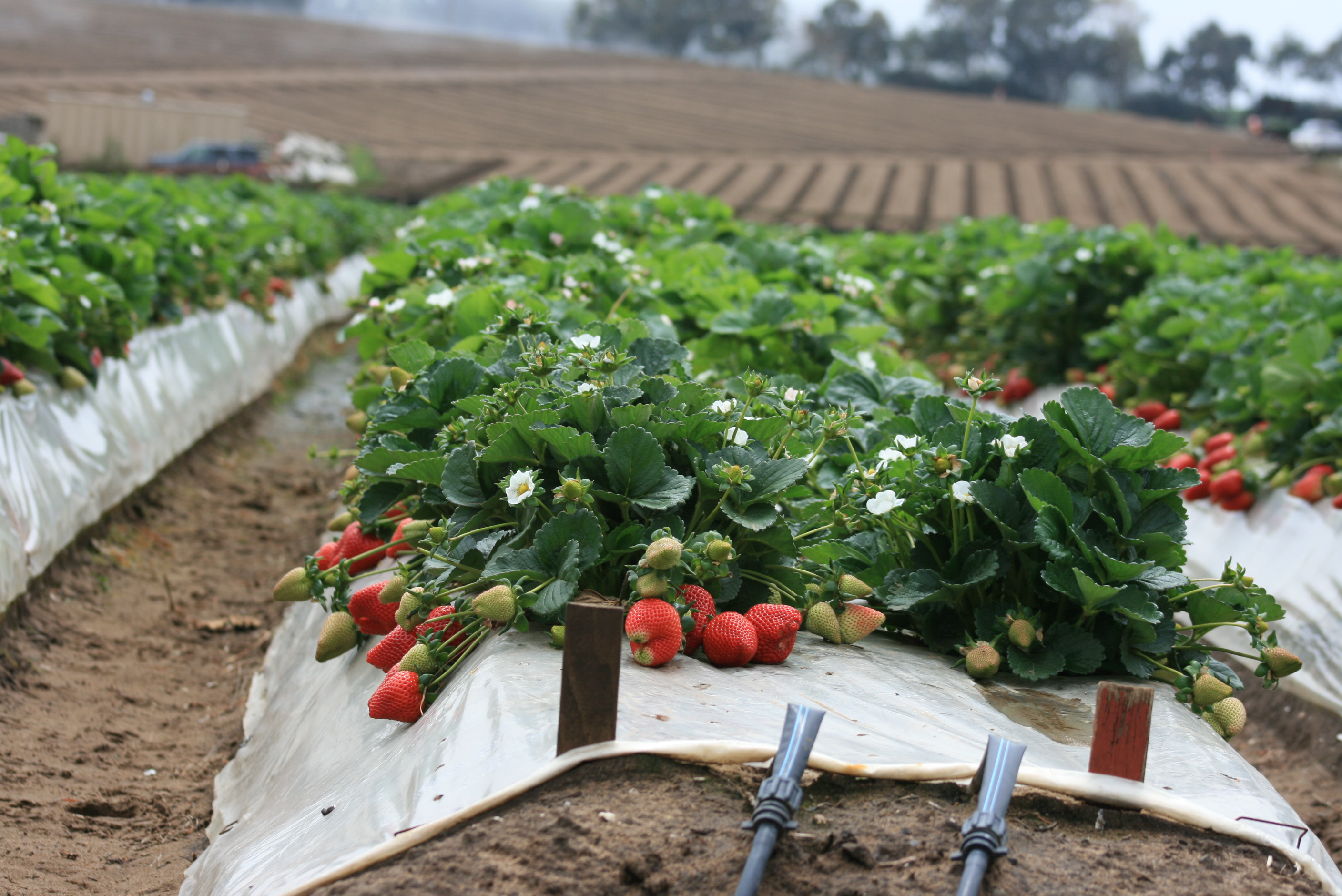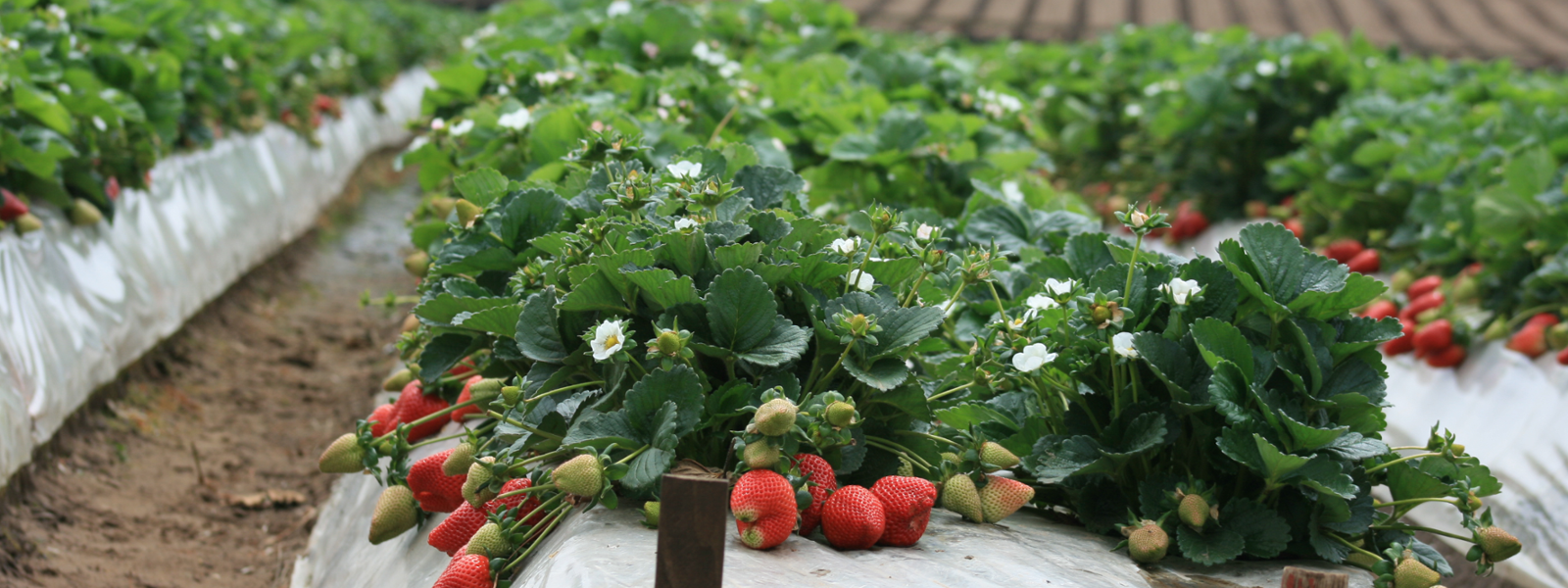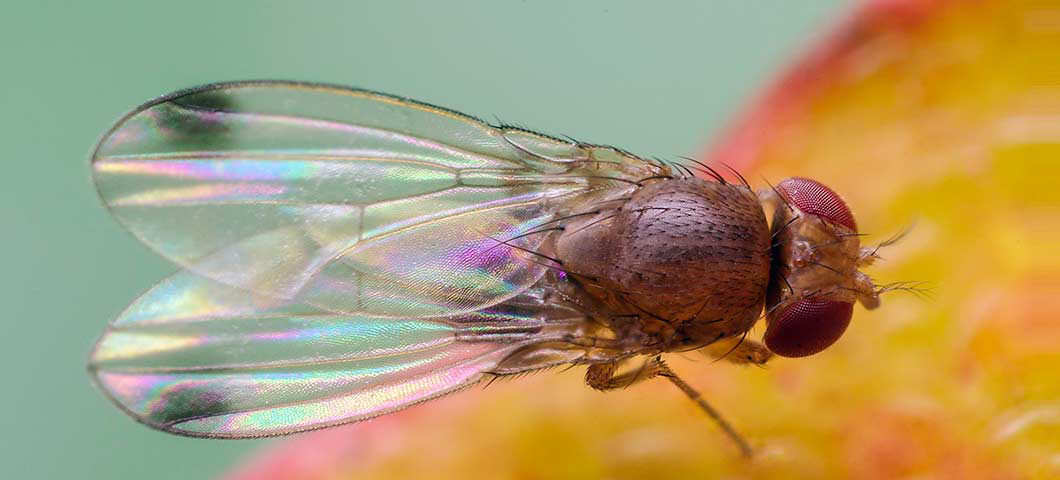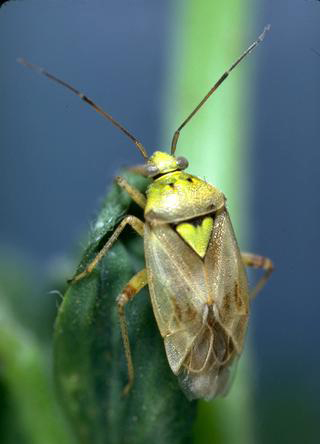New tools take aim at controlling strawberry pests

Research conducted by the University of California tested new insecticides for controlling lygus bugs, a top pest for strawberries. Additional research also explored whether beneficial insects, fungi and bacteria can help manage spotted wing drosophila, which has developed resistance to widely used insecticides.
Photo/Bob Johnson


Photo/Oregon Department of Agriculture

Photo/Regents of University of California
By Bob Johnson
Strawberry growers in the Central Coast are headed toward a zero-tolerance policy on lygus bugs, the most destructive insect pest in the crop.
When the bugs feed on the seeds, they cause misshapen fruit that is unfit for market. Even slight damage can lead to hidden but substantial yield loss.
“When lygus feed, they are destroying the embryo,” said Mark Bolda, University of California Cooperative Extension farm advisor based in Watsonville. “As slight as the damage may be, it can still cause a significant loss in yield.”
Bolda conducted research trials in 2021 and 2022 on new materials for controlling lygus bugs in strawberries. He discussed the findings at the 2024 Strawberry Production Research Meeting in Watsonville. The event also provided research insights on using beneficial insects to target another strawberry pest, spotted wing drosophila.
The field trials on lygus bug remedies, which Bolda conducted in partnership with the crop-protection company Syngenta, revealed the effectiveness of an experimental insecticide in curbing yield losses.
Strawberries treated with ISM-555, which contains a new insecticide, Plinazolin, yielded an average of 2,679 boxes an acre. Plots treated with the pyrethroid Mustang Maxx yielded 1,874 boxes an acre. Untreated plots produced 1,685 boxes an acre, according to trial results.
The yield difference came because berries grew larger when lygus bugs were better controlled and the insects’ feeding was reduced. The berries in experimental plots averaged 22 grams, while those in nearby untreated plots averaged 16 grams.
“When seeds are missing, the fruits are smaller,” Bolda said. “The near total elimination of lygus makes the fruit larger. There was a 40% difference in yield between the material that controlled lygus and the untreated control.”
Researchers also monitored beneficial insect populations as part of the trials.
“After the spray, there were significantly fewer spiders and minute pirate bugs,” Bolda said. “After the spray, there is an impact, but the population recovers.”
Bolda said some currently widely used materials for treating lygus bugs, including Malathion and Mustang Maxx, demonstrated detrimental impacts on beneficial insects in trials.
He said new materials expected to be registered soon aim to protect beneficials while providing control of lygus bugs throughout the strawberry growing season. Avaunt eVo, an insect-control product used on a variety of specialty crops, should be registered by the end of the year, he noted. Also in the registration process is the insecticide Sefina. In addition, Syngenta is evaluating another new lygus material as part of the registration process for its trademarked Plinazolin technology, he said.
Other researchers say improved biological control may also help strawberry and blackberry growers control spotted wing drosophila, an exotic vinegar fly from Asia that is particularly damaging to soft fruit.
In the 15 years since spotted wing drosophila first appeared in California strawberries, the pest has already developed resistance to widely used insecticides.
The vinegar fly punctures the surface of soft fruit such as strawberries, blackberries, raspberries and ripe cherries, depositing its eggs under the surface.
“There’s a lot of natural enemy activity going on right now,” said Kent Daane, a biological control specialist at the University of California, Berkeley. “Unfortunately, it’s not enough to control the pest. We’re looking at importation and augmentation of natural enemies, and some members of our group are looking at beneficial fungi and bacteria.”
In cooperation with berry producer Nuturipe Farms, researchers attempted to release large numbers of natural enemies when pest populations approached levels that posed economic damage.
The experiment proved to be limited because the beneficials had to be released numerous times and failed to establish populations.
Meanwhile, researchers have had to look to Asia for the most effective beneficials.
“In classic biocontrol, you go to the native area of the pest—Asia—and find natural enemies that will maintain a stable population,” Daane said. “You introduce some of these into the system, and they keep the pest population down to acceptable levels.”
Research in Asia uncovered 20 potential biological controls. After five years, the U.S. Department of Agriculture allowed the importation of one—the parasitic wasp Ganaspis brasiliensis—because it attacks only spotted wing drosophila and closely related species.
Researchers have released Ganaspis in numerous locations, including in Salinas and Santa Maria strawberry-growing regions, but the beneficial failed to establish robust populations in berries.
“We need to understand why Ganaspis is not doing as well in California as in Canada and Delaware,” Daane said. “My worry is that the hot, dry summers in California are not conducive to parasitoids. We’re going to import Ganaspis populations from southern China, where there are hot summers.”
Unfortunately, the most widely used materials to control spotted wing drosophila are hard on this beneficial.
“Malathion, Entrust and Mustang Maxx were the most toxic to Ganaspis,” Daane said. “Grandevo was the least toxic material, but it was not effective against spotted wing drosophila.”
The strategy is to release Ganaspis to knock down pest populations in areas where these insecticides are not used.
“If we have success with imported biocontrols, we’re going to focus on riparian zones outside the cropping system because we have movement of spotted wing drosophila from these riparian zones into the cropping system,” Daane said. “If we can lower the number of spotted wing drosophila coming into your strawberries and blackberries, that will make the chemicals more efficient.”
(Bob Johnson is a reporter in Monterey County. He may be contacted at bjohn11135@gmail.com.)




